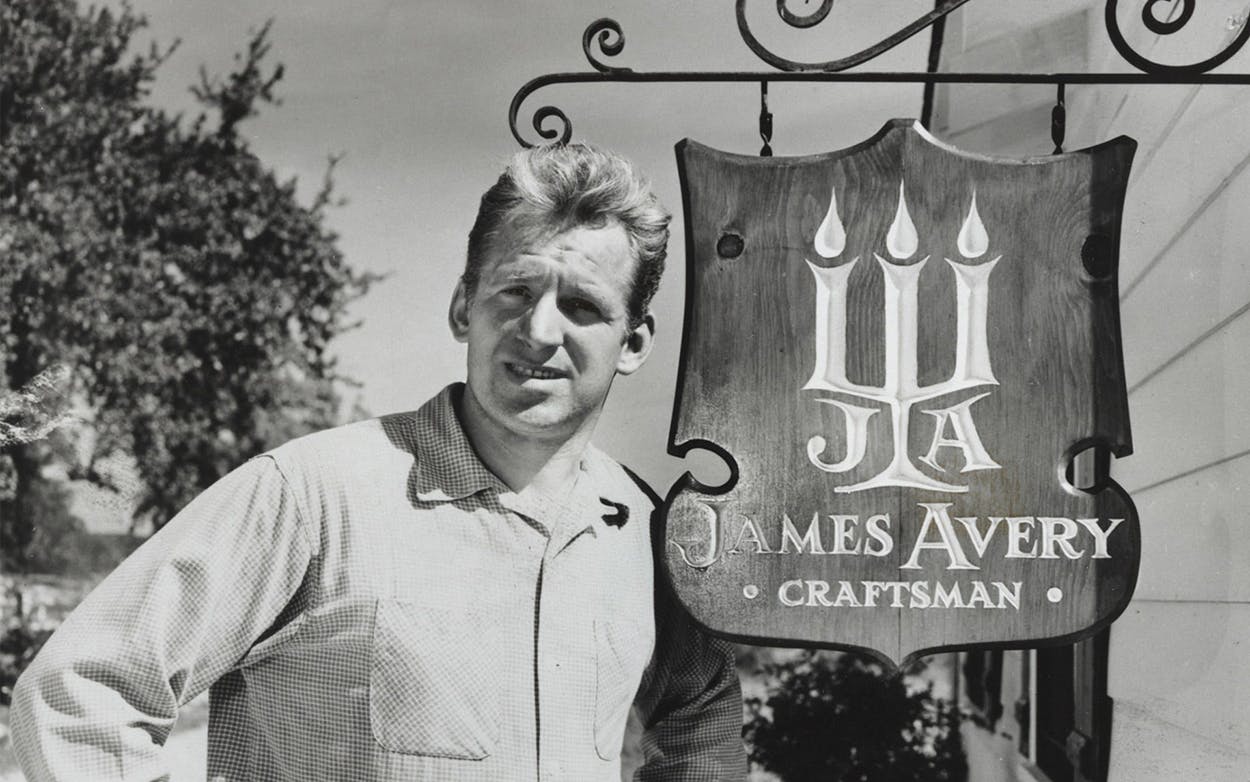Buried in a corner of my jewelry box is my James Avery charm bracelet, once my most prized possession and now a time capsule of my life. Practically every milestone, every childhood pursuit, is marked with a sterling silver charm that hangs from the chain-link bracelet. A basketball, given to me by my dad after my first game in fourth grade, which we won with an impressive final score of 4-2. A heart from my first boyfriend. A year charm from when I graduated high school (Class of 2000 forever). For many Texas girls, the James Avery charm bracelet is a rite of passage. With Monday’s news that founder James Avery had died at age 96, I have been reflecting on the brand he built and what his life’s work means to so many devoted fans.
The iconic Texas jewelry line began in 1954 in Kerrville, where a young Avery started making jewelry in his mother-in-law’s two-car garage. He had just $250 in capital, but he built a workbench and hung a sign out front that read “James Avery Craftsman,” accompanied by the logo that the brand still uses today. He made all the jewelry himself in those early years, selling $5,500 in 1954 and then $7,500 the next year. Avery started with sterling silver and expanded into making pieces with yellow and white gold as well as gemstones. Business was good enough by 1957 that he was able to bring on an employee, move into a bigger studio, and print his first catalog. One of the big breaks of his career came when nearby elite Texas girls camp Camp Mystic, in Hunt, started selling his pieces in their camp store in the late fifties. Campers helped spread the word as they returned to their hometown cities wearing new charms. The camp commissioned Avery to make official Mystic charms to commemorate their summer in 1975, and decades later, the James Avery flagship in Kerrville is still the first place many Camp Mystic girls go after their parents pick them up in order to get their memento.
The company’s roots are faith-based, as Avery said he started it at a time when he was renewing his Christian faith after being agnostic for most of his life (he identified as agnostic again in later interviews). His business grew through sales of pieces that depicted Christian symbolism in church gift shops and other retail stores. Avery purchased twenty acres in Kerrville to build his first retail store in 1973, followed by a corporate headquarters, which is now run by his two sons, Chris and Paul. After news of Avery’s passing, longtime customers are sharing personal stories on the James Avery homepage as a tribute to the designer who created pieces that hold a special meaning for so many Texans.
As the years went on, I forgot all about my charm bracelet; it lay collecting dust while I went to college and when I got married, staying stashed away as we moved from house to house. Then, six years ago, I had a daughter. For her first birthday, she opened her own small James Avery signature box, orange with the stamped logo, “JA,” set below a gold candelabra, and out of the soft felt pouch fell a bracelet with her first charm, a birthday cake. Each year, my aunt gives her a new one to mark the day, and it’s become her most highly anticipated gift. Her favorite thing to do is pull out my jewelry box, and the first piece she goes for is my charm bracelet, wanting to hear the story behind each charm: how, when, and why I got each one, a testament that the James Avery legacy is forever etched in our memories.
- More About:
- Style & Design






